Theory vs. Fact
Console Fact Sheets ||
Saturn
game Pics ||
PS1 game Pics ||
Change Resolution:
1024x768 or below
As seen on the Console History page, in the above link, the Saturn sold only
3 million units in the US, and 10 million in Japan, to the PS1's ultimate 60+million
worldwide. Over twelve hundred games were ultimately made for the Playstation
in the United States, and at best several hundred were made for the Sega Saturn.
The purpose of this section is to challenge popular ideas on why this happened
by putting them up against the documented facts. If reading this causes you
to think that the intent of this website is to convince you to prefer one console
or the other, you need to read much more carefully, the reason this website
exists is because everybody already does.
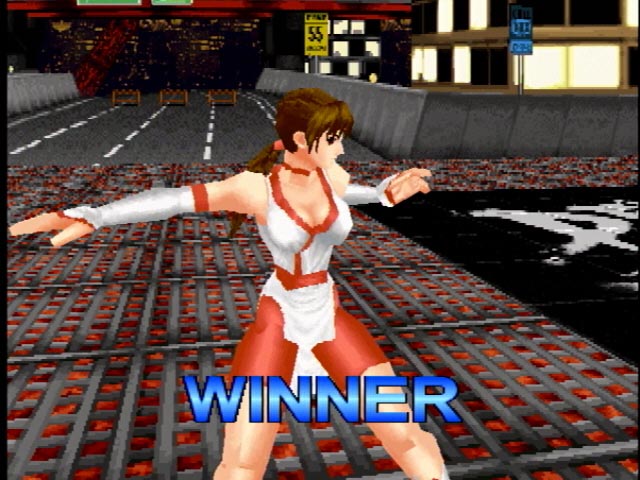
There
are a vast variety of theories as to why the Saturn failed to gain significant
market share in the United States. This will focus on the United States because
the Saturn was actually Sega's only successful console in Japan. Neither the
Genesis nor the Dreamcast sold as well there as the Sega Saturn did, and it
was only after Final Fantasy 7 was released that the Playstation started to
outsell the Saturn in Japan, which is actually fairly similar to what it was
like in the US as well.
"No games..."
The first theory we'll cover is the one that claims that the Saturn didn't have
any, or didn't have enough, "good" games. As shown on the
Month to Month games section below, according to a series of
polls conducted
on Usenet, the Saturn had just as many games of notable quality as the PS1 did,
even in the United States, right up to and even for a good while after its discontinuation.
Performance "gap"
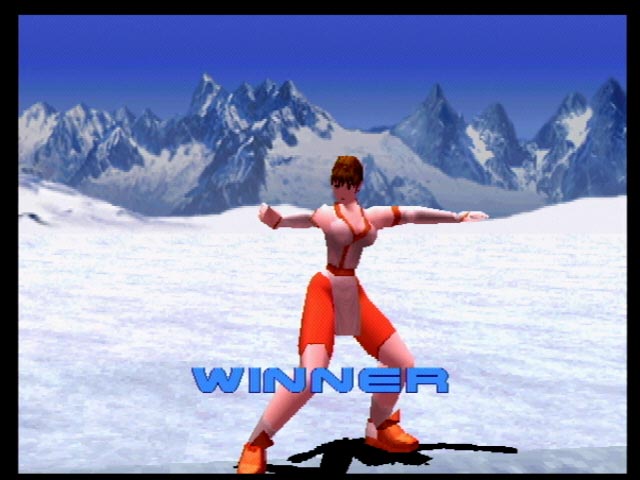
Another
popular theory on why the Saturn failed to capture the masses' interests is
that it didn't have comparable 3D performance to the PS1. The Saturn, is significantly
more powerful than the PS1 in 2D capabilities, but it is also able to run at
higher resolutions (640x224, 704x480), and capable of higher resolution and
color count textures with less effort. The Saturn is more capable of these things
because it has 66% more
Video RAM. On the Saturn,
as is true on any hardware, more RAM allows for higher color, higher resolution
texture mapping, and higher screen resolution. Combine this with the
specs
directly from Sega and Sony's web pages, showing that both systems were capable
of similar polygon performance, shows clearly that the Saturn was no slouch
in the 3D department either.
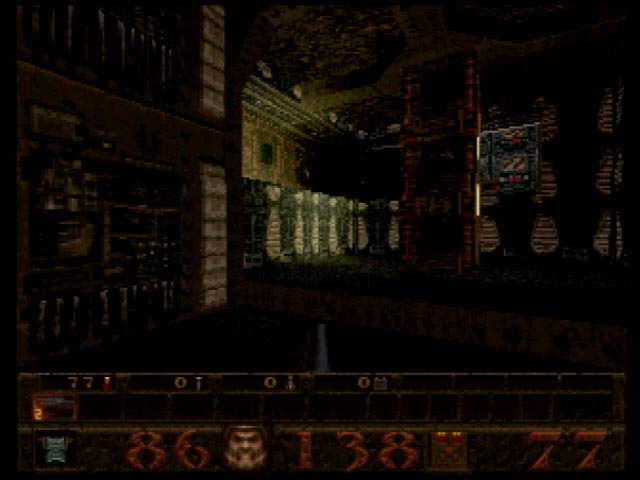
The catch is that Sega achieved comparable polygonal performance with the Saturn
by including more processors in the Saturn, which made development more difficult
at first than it would be on the more simple PS1. In addition to having better
developer support from Sony than Sega gave for the Saturn, and better more mature
development kits, the PS1 also had built in special effects in the form of transparency
and gouraud shading. This allowed the PS1 to generate lightsourcing and transparent
special effects or polygons with a minimum hit to the system's polygon performance.
Since the Saturn had to generate these effects through sheer processing muscle,
developers of Saturn games usually had to lower the resolution to 320x224 in
order to program
effects similar to those on
the Playstation. What this all means is that because the PS1 could just "turn
on" light sourcing and transparency, the
effects
were achieved with uniform results across any game that used them, while the
same
effects on the Saturn were subject to the
quality of the code, written by each individual developer, to display it.
Uniformity is a good thing, the PS1 had that over the Saturn because of its development kits and
simple but effective design. Even though
some developers were able to achieve comparable or even unique
effects
in Saturn games, because other games failed to have comparable effects, and some developers chose to
release incomplete, buggy, and unoptimized games, the Saturn gained the reputation of not being as
"good at" 3D as the Playstation was.
Perception gap
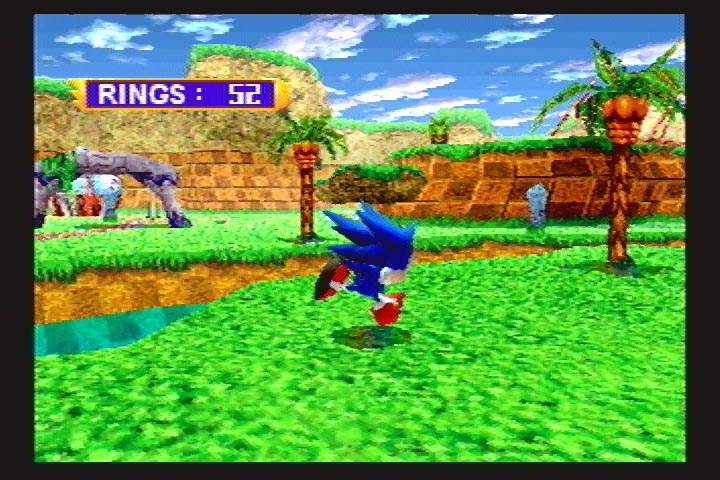
On a side note, but on the topic of public perception and system performance,
the specs listed here for the PS1 are taken directly from the Sony web page.
Sony had claimed for 5 years that the PS1 could display 500,000 texture mapped
gouraud shaded or
1.5 million flat shaded polygons per second
(
22 +
23),
which was never true. Contrast this with the fact that Sega in particular, while
being well known for hyping their systems as the "next level" or having
"High definition graphics", or even their games as being "arcade
perfect", has never falsified their system specs on any console. This fact
didn't stop the media from trying to undermine their marketing by making claims
that Sega was exaggerating their specs. The same media zenes never questioned
Sony's announced specs for either of their consoles, even though both of Sony's
system's pre-launch specs were clearly massively exaggerated.(
24).
In 1995, Developers were happy to achieve 80-90,000 polygons per second in game
(
27),
and gouraud shading those polygons meant only 16-colors or less on the texture
maps. Yet, during the same time period game magazines, and developers like Electronic
Arts, were publicizing (
28)
that the Saturn could only do 60,000 polygons per second while the PS1 could
do 360,000. The former number was the actual performance of the launch Saturn
title Daytona, the later was a theoretical number that the PS1 never achieved.
It is, however, these numbers that are emblazoned on the minds of gamers and
magazine editors to this day. It is impossible to say how much this false public
perception of the performance differences affected the outcome of the 32-bit
system wars, but it is undeniable that it was extremely influential.
"Just a 2D system"
Another possible cause for the idea that the Saturn was primarily a 2D game
system with moderate 3D capabilities is that there are quite a few 2D games
that were made for it, in comparison to the PS1's library. Sony forced developers
to make PS1 games exclusively 3D until some years after the Playstation's release.
Combine the library differences with a couple of Industry
rumors
about the President of Sega of Japan deciding the architecture of the Saturn
over a golf game with a buddy from Hitachi, and the same President "scrambling"
to revamp the Saturn's 3D capabilities immediately after Sony publicized the
PS1's specs (mind you, the 500k/1million specs, not the real ones) and you have
a theory run wild with speculation that proponents will defend to their deaths.
Because of this, and the fact that 3D gaming caught on and completely replaced
2D gaming in this generation, Sony has been credited as the company to bring
gaming into 3D.
Pioneering the next generation...
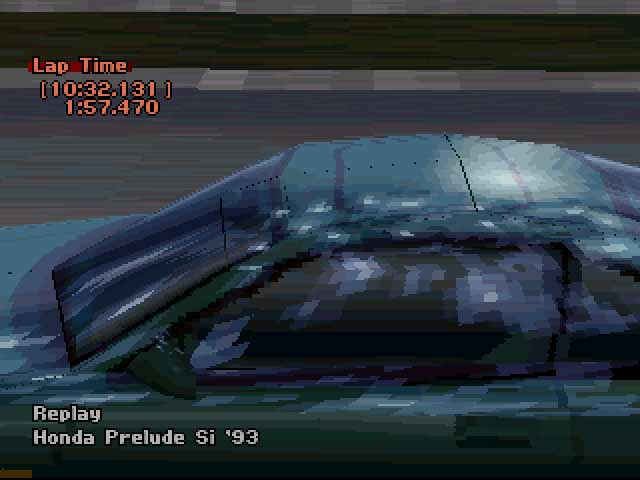
A
similar thing happened with a different type of gaming only a couple of years
before. Sega released the Sega CD to allow gamers to experience Laserdisc style
FMV adventures in the home at typical console prices. Sega even aided Digital
Pictures, a company that had experimented with FMV games using VCRs in the 80's,
in porting over most of its titles to the Sega CD. The problem most often cited
for why this type of game didn't take off is that it was too early. The Sega
CD's color palette caused FMV to look murky or grainy. While higher color video
was possible later in its life, when Cinepak and Truvideo were written, it was
too late in the public and media's mind. With the Sega CD's and FMV style gaming's
lack of success behind them, Sega did choose to make the Saturn the ultimate
2D hardware, and to focus heavily on 2D gaming for the Saturn because of it.
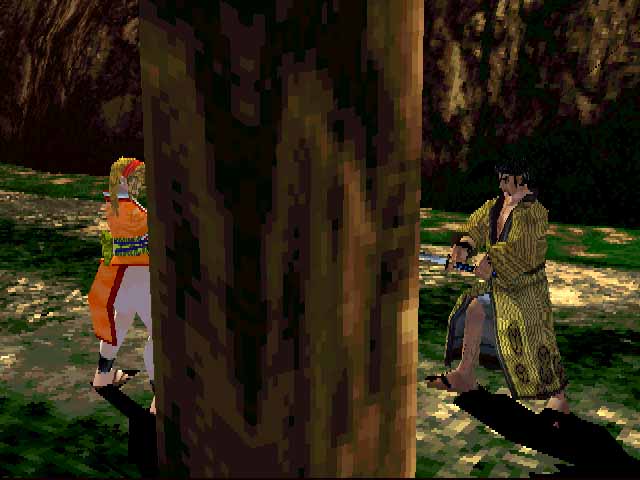
Nobody
could have predicted that rudimentary 3D games, with graphics that warp, textures
that block up when they approach the screen, and color count per texture comparable
to the 8-bit NES's color palette, would have completely replaced 2D games with
higher color counts, greater animation, and all around better aesthetic value.
It wasn't until the Dreamcast and PS2 that 3D games contained a comparable image
quality to this generation's 2D games, and 2D games had been the entire video
game market since its conception.
Some of the pioneers of polygonal 3D video games in the arcades and on consoles were Atari, with
Stun Runner, Hard Drivin' and Race Drivin', Sega with the first polygonal 3D
Fighter, Virtua Fighter, Virtua Racing, Virtua Fighter 2, Daytona, Sega
Rally, Virtual On, and Virtua Cop in the arcades and at home, and Namco with their
Ridge Racer and Tekken series. In addition to those games, LHX Attack Chopper was
released by EA on the Genesis in 1992, and StarFox among lesser 3D titles for the SFX chip
was released by Nintendo and designed by Argonaught on the SNES in 1993. Sony Imagesoft
was the only Sony Videogame department at the time, and they focused primarily on FMV for
the Sega CD, and 2D games like Hook.
Public memory and unforgiveness...
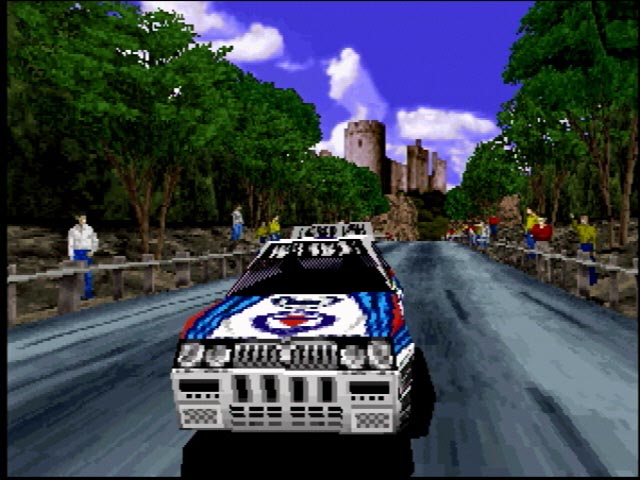
On
the subject of Sega's efforts with 3D and FMV, still another theory says that
the public was holding Sega's moderately successful Sega CD and utterly rejected
32X Genesis add-ons
against them when the Saturn
released. As pointed out in the
Sega CD and
32X section of Console History, the Sega CD sold right around two and a
half million units, and the 32X sold less than 200,000 units in the United States,
by the time the Saturn was released. There is no documentation to back up that
any significant number of people are actually disgruntled about either add-on,
or that what few actually bought a unit could influence the 60-80 million user
strong Video Game Industry enough to actually cause a console to fail. There
is, however, plenty of media generated hype in game magazines and websites against
Sega for releasing these add-ons.
Another undocumented fact is that Sony's Playstation had an unofficially admitted
10% of defective units in its first couple of years at least. When faced with
mailing in their Playstation for repair, at their own cost since Sony wouldn't
cover the defect under the warrantee, many owners simply bought another PS1
to replace their broken model (
11). While every
manufacturing run is prone to having a small percentage of defects, a simple
search of Google Groups will reveal a significant difference in the number of
questions and complaints between the
Playstation
1's defect rate, and the
Sega
Saturn's on Usenet. The Playstation 2 has also had a large number of defects
including overheating due to dust build up and
Disc
Read Errors, yet there has been no public outcry, nor one page of legitimate
media coverage. Whether or not the public at large, those who fall under the
sway of "pop culture", have any memory of past wrongs committed by
any company is something which remains to be proven.
Relevant Facts and Background
In 1995, Sega was the darling of the Industry and the company most scrutinized
by politicians and the media. By Summer of 1998 Sega's winning streak was officially
over. In three short years, Sega had turned over its American office's management,
which had been present since 1990 and responsible for the success of the Sega
Genesis. Sega of America had been placed under direct management by its Japanese
office, and given a new figurehead, Bernie Stolar. Bernie Stolar proceeded to
aggravate what few loyal developers Sega had in the West, losing Working Designs
over a simple Entertainment Expo booth dispute. He was also responsible for
slowing the flow of Japanese RPGs and other localizations to a trickle, and
eventually canceling the system over a year before Sega's launch of the Dreamcast
in September of 1999. Stolar has also gone on record stating his opinion of
the Saturn and its library in a simple but familiar phrase, "it did not
have very good games" (
1,
5). With a friend like that,
the Saturn didn't need any enemies.
Meanwhile, also in 1995 a new company was about to join the fray of game console
manufacturers in the United States. This company had worked closely with the
former management of Sega of America, with whom they had developed "criteria
for what the next optical platform ought to be" (
2).
When this occurred, prior to 1992, this company had no hardware division for
video games and had only one small publishing house responsible for multiplatform
ports and FMV titles on the Sega CD like Sewer Shark. When Sega of Japan rejected
their plans, they began work on a CD-ROM upgrade for the Super Nintendo (
3).
Nintendo unceremoniously dumped them at a major Entertainment Expo, announcing
that Phillips would instead develop their add-on. Months later this company
announced a stand alone system with 3D specs that shocked the Industry, although
they were bloated in comparison to the system's actual capabilities (
4).
This system became the Playstation, and Sony, its manufacturer, dominated the
worldwide markets for over a decade. More can be said on how and why this happened,
but the reason was not because of the Playstation's absolute superiority in
hardware or software.
Conclusions
Popular opinions and media generated "history" have omitted relevant
facts in regard to this generation. The Saturn and Playstation were released
within a few months of one another, were at the same price as one another by
the time both consoles were on the market, and had similar software release
numbers and quality. Both systems were designed and finalized by the middle
of 1993, and had similar technical problems to overcome in creating a fully
3D system as a consumer level product. When they launched in Japan by Christmas
of 1994, they were both considered cutting edge, and both sold relatively well
in relation to one another for several years. As is true in all generations,
owning one and not the other meant excluding oneself from many of the best titles
of the generation, because most of the best titles each generation are console
exclusive.
Below is a month to month list of notable Saturn software
compared to notable PS1 software.
Click
here for information on the notable
game lists.
E-mail me with suggestions or comments.
Year 1 Start
//
Year 1 //
Year 2 //
Year
3 //
Year 4 //
Final //
Saturn Launch
May 1995
Astal (action platform)
Virtua Fighter (3-D fighter)
Clockwork Knight (action platform)
Daytona USA (racing)
Panzer Dragoon (shooter / adventure)
Romance IV: Wall of Fire (strategy)
Shinobi Legions (action platform)
June 1995
Virtua Racing
September 1995
Virtua Fighter Remix (3-D fighter)
Sim City 2000 (simulator)
October 1995
“D”
Bug (3-D action platform)
Cyber Speedway (hover racing, 2 Player Split)
Rayman (action/platform)
Wing Arms (arcade flight adventure)
Mansion of Hidden
Souls (adventure/mystery)
Ghen War
Theme Park (simulator)
November 1995
Virtua Fighter II (3-D fighter)
December 1995
Dark Legend (Unique 2-D fighter)
Black Fire (helicopter shooter)
Sega Rally Championship (racing)
Virtua Cop (gun game/shooter)
January 1996
Black Dawn (helicopter sim.)
Darius Gaiden (shooter)
Mystaria/Blazing Heroes (rpg)
High Velocity (Sports Car-Mountain racing)
Need for Speed (Unique racing, with cops)
February 1996
Clockwork Knight 2 (action platform)
Sega Rally NetlinksEdition (online!)
Street Fighter Alpha (fighter)
March 1996
Night Warriors DSII (fighter)
Decathlete (decathelon events)
Golden Axe: The Duel (fighting w/Weapons & Magic)
April 1996
X-Men C.O.T.A. (fighter)
Panzer Dragoon II (shooter/adventure)
Guardian Heroes (fighter/adventure (6 player)
Year 1 End
Saturn: 37 games
//
Year 1 //
Year 2 //
Year
3 //
Year 4 //
Final //
May 1996
Wipeout (hover racing)
Iron Storm (WW II strategy)
June 1996
Magic Knight Rayearth (action rpg)
Gun Griffon (mech warrior adventure)
Baku Baku (Puzzle game)
Shining Wisdom (action rpg)
July 1996
Worms (action / strategy)
Herc’s Adventure
The Legend of Oasis (Adv by Ancient)
August 1996
Nights w/ Controller (3-D adventure)
Virtua Fighter Kids (3-D fighter)
Alien Trilogy
September 1996
Bubble Bobble & Rainbow Islands
Galactic Attack (Psuedo 3D shooter)
F-1 Challenge (formula car racing)
Bust A Move 2
Three Dirty Dwarves (3-D action fighter)
October 1996
VR Pro Pinball
Mr. Bones (action platform) (2-disc set)
Fighting Vipers (3-D fighter)
November 1996
Street Fighter Alpha 2 (2-D fighter)
Virtual On (3-D mech fighter)
Tomb Raider (action RPG)
Daytona USA Champ.Edition (arcade racer)
Virtua Cop 2 (3-D gun game)
December 1996
Bug Too (3-D adventure / platform)
Christmas Nights (flying racer demo)
Dark Savior (3/4 view rpg)
Daytona USA CCE Netlinks Edition (online!)
Dragon Force (rpg)
Heir Of Zendor(strategy)
Command and Conquer
Tempest 2000 (Atari Jaguar
port)
Williams Arcade’s Greatest Hits
Die Hard Trilogy (driving / gun
game / shooter)
Power
Slave (1st person shooter)
Virtual On Netlinks Edition (3-D mech fighter)
January 1997
AMOK
Super Puzzle Fighter II (puzzle) (hard to find)
February 1997
March 1997
Die Hard Arcade (3-D story fighter)
Lunacy
Bust A Move 3
April 1997
Mech Warrior 2 (Enhanced from original PC version)
Fighters Mega Mix (3-D fighter)
Pandemonium (just play NiGHTs)
Norse by Norsewest (puzzle adventure)
Year 2 End
Saturn: 46 games (83 total)
//
Year 1 //
Year 2 //
Year
3 //
Year 4 //
Final //
June 1997
Atari Collection Vol 1
July 1997
Shining The Holy Ark (True 3D rpg)
Albert Odyssey: The Legend of Eldean
Manx TT Superbike (motorcycle racing)
August 1997
Bomberman (Online and more than four player!)
Sky Target (After Burner in 3D)
Sonic JAM (All cartridge Sonic games
& one 3D level)
Mortal Kombat Trilogy (2-D fighter)
September 1997
Mega Man 8 (action platform)
Croc (3D Adventure)
October 1997
Duke Nukem 3-D
(Fully Polygonal, dynamic lighting)
Last Bronx (3-D fighter)
Marvel SuperHeroes 2-D fighter (ram pack)
Resident Evil (Capcom) (3-D action adventure)
Mega Man X 4 (action platform)
November 1997
Sega Ages(classic Sega games)
Enemy Zero (1st person adventure / mystery)
Sonic R (3-D racer, Full Transparent
reflective level!)
Quake (Colored lighting, comparable to N64)
December 1997
Street Fighter Collection (2-D classic collection)
January 1998
February 1998
March 1998
House of the Dead (gun game)
April 1998
Burning Rangers (3-D firefighting adventure)
Panzer Dragoon Saga (True 3D rpg)
Year 3 End
Saturn: 24 games (107 total)
//
Year 1 //
Year 2 //
Year
3 //
Year 4 //
Final //
May 1998
June 1998
July 1998
Shining Force III (strategy / rpg)
Year 4 End
Saturn: (107 total)
Final month before Dreamcast
Saturn: (107 total)
//
Year 1 //
Year 2 //
Year
3 //
Year 4 //
Final //
Click
here for the Dreamcast compared to PS1&PS2
Year 1 Start
Playstation 1
May 1995
June 1995
Playstation launch
September 1995
Ridge Racer
Wipeout
Rayman
Destruction Derby
Twisted Metal
WarHawk
Battle Arena Toshinden
October 1995
Tekken
Jumping Flash
XCOM: UFO Defense
Theme Park (simulator)
November 1995
Ultimate Doom
December 1995
King’s Field
Panzer General
January 1996
Resident Evil
February 1996
Alien Trilogy
March 1996
Descent (Avail on PC first)
“D”
The Need for Speed
April 1996
Year 1 End
Playstation 1: 19 games
May 1996
June 1996
July 1996
Worms
Namco Museum 1
Syndicate Wars
August 1996
Tekken 2
Crash Bandicoot
Die Hard Trilogy
September 1996
Namco Museum 2
Bust A Move 2
Wipeout XL
Ridge Racer Revolution
Black
Dawn
Tokyo Highway Battle
Bubble Bobble
October 1996
VR Pro Pinball
Tempest X3
Tomb
Raider
Legacy Of Kain: Blood Omen
Twisted Metal 2
Formula 1
Mortal Kombat Trilogy
Pandemonium
November 1996
Disruptor (FPS with psionic powers)
Tecmo’s Deception
Jet Moto
Suikoden
Tobal no. 1
December 1996
Raystorm
Atari Greatest Hits 1
Robotron X
January 1997
Super Puzzle
Fighter II Turbo
Namco Museum 3
Rally Cross
Carnage Heart
February 1997
Soul Blade
Nanotech Warrior
Command and Conquer
March 1997
April 1997
Rage Racer
Wild Arms
Year 2 End
Playstation 1: 38 games (57 total)
June 1997
Namco Museum 4
July 1997
Ace Combat 2
Herc’s Adventure
August 1997
Final Fantasy VII
Odd World Abe’s Oddysee
September 1997
Cart World Series (Sim gameplay)
Bushido Blade
Castlevania: SOTN
Croc The Legend
of Gobbos
Intelligent Cube
October 1997
Cool Boarders 3 ("widespread control")
Armored Core
Colony Wars
Parappa the Rapper
Command and Conquer RA 1
Time
Crisis
G Police
November 1997
Crash Bandicoot 2
Midway Arcade Collection 2
Norse
by Norsewest (puzzle adventure)
December 1997
Midway Atari Collection 2
Resident Evil 2
Final Fantasy Tactics
Alundra
January 1998
Skullmonkeys
February 1998
Need for Speed III: Hot Pursuit
Tekken 3
Klonoa
March 1998
SaGa Frontier
Dead
or Alive
G-Darius
Bloody Roar
April 1998
Gran Turismo
Breath of Fire III
Tactics Ogre
Einhander
Year 3 End
Playstation 1: 36 games (93 total)
May 1998
Vigilante 8(“Tweaked” TM2)
June 1998
Devil Dice
Grand Theft Auto
July 1998
August 1998
Tenchu Stealth Assassins
Thunder
Force V
Parasite Eve
Spyro The Dragon
Treasures of the Deep
September 1998
Metal Gear Solid
Xenogears
The Unholy War
Rival Schools United By Fate
MediEvil
October 1998
Brave Fencer Musashi
Crash Bandicoot Warped
November 1998
Roll Away
Dark
Stalkers 3
MDK
Brigandine
December 1998
Mr Domino
January 1999
Akuji: The Heartless
Syphon Filter
Silent Hill
March 1999
Roll Cage
April 1999
Ehrgeiz
Lunar The Silver Star Story
Ridge Racer IV
Year 4 End
Playstation 1: 27 games (120 total)
May 1999
Street
Fighter Alpha 3
Ape Escape
StarOcean:The Second Story
June 1999
Driver
July 1999
Legacy
of Kain: Soul Reaver
August 1999
Suikoden II
Tony
Hawk Pro Skater
Final Fantasy VIII
Wipeout 3
Final month before Dreamcast
Playstation 1: 9 games (129 total)
Click
here for the rest of the PS1 library.
 There
are a vast variety of theories as to why the Saturn failed to gain significant
market share in the United States. This will focus on the United States because
the Saturn was actually Sega's only successful console in Japan. Neither the
Genesis nor the Dreamcast sold as well there as the Sega Saturn did, and it
was only after Final Fantasy 7 was released that the Playstation started to
outsell the Saturn in Japan, which is actually fairly similar to what it was
like in the US as well.
There
are a vast variety of theories as to why the Saturn failed to gain significant
market share in the United States. This will focus on the United States because
the Saturn was actually Sega's only successful console in Japan. Neither the
Genesis nor the Dreamcast sold as well there as the Sega Saturn did, and it
was only after Final Fantasy 7 was released that the Playstation started to
outsell the Saturn in Japan, which is actually fairly similar to what it was
like in the US as well.  Another
popular theory on why the Saturn failed to capture the masses' interests is
that it didn't have comparable 3D performance to the PS1. The Saturn, is significantly
more powerful than the PS1 in 2D capabilities, but it is also able to run at
higher resolutions (640x224, 704x480), and capable of higher resolution and
color count textures with less effort. The Saturn is more capable of these things
because it has 66% more Video RAM. On the Saturn,
as is true on any hardware, more RAM allows for higher color, higher resolution
texture mapping, and higher screen resolution. Combine this with the specs
directly from Sega and Sony's web pages, showing that both systems were capable
of similar polygon performance, shows clearly that the Saturn was no slouch
in the 3D department either.
Another
popular theory on why the Saturn failed to capture the masses' interests is
that it didn't have comparable 3D performance to the PS1. The Saturn, is significantly
more powerful than the PS1 in 2D capabilities, but it is also able to run at
higher resolutions (640x224, 704x480), and capable of higher resolution and
color count textures with less effort. The Saturn is more capable of these things
because it has 66% more Video RAM. On the Saturn,
as is true on any hardware, more RAM allows for higher color, higher resolution
texture mapping, and higher screen resolution. Combine this with the specs
directly from Sega and Sony's web pages, showing that both systems were capable
of similar polygon performance, shows clearly that the Saturn was no slouch
in the 3D department either.  The catch is that Sega achieved comparable polygonal performance with the Saturn
by including more processors in the Saturn, which made development more difficult
at first than it would be on the more simple PS1. In addition to having better
developer support from Sony than Sega gave for the Saturn, and better more mature
development kits, the PS1 also had built in special effects in the form of transparency
and gouraud shading. This allowed the PS1 to generate lightsourcing and transparent
special effects or polygons with a minimum hit to the system's polygon performance.
Since the Saturn had to generate these effects through sheer processing muscle,
developers of Saturn games usually had to lower the resolution to 320x224 in
order to program effects similar to those on
the Playstation. What this all means is that because the PS1 could just "turn
on" light sourcing and transparency, the effects
were achieved with uniform results across any game that used them, while the
same effects on the Saturn were subject to the
quality of the code, written by each individual developer, to display it.
The catch is that Sega achieved comparable polygonal performance with the Saturn
by including more processors in the Saturn, which made development more difficult
at first than it would be on the more simple PS1. In addition to having better
developer support from Sony than Sega gave for the Saturn, and better more mature
development kits, the PS1 also had built in special effects in the form of transparency
and gouraud shading. This allowed the PS1 to generate lightsourcing and transparent
special effects or polygons with a minimum hit to the system's polygon performance.
Since the Saturn had to generate these effects through sheer processing muscle,
developers of Saturn games usually had to lower the resolution to 320x224 in
order to program effects similar to those on
the Playstation. What this all means is that because the PS1 could just "turn
on" light sourcing and transparency, the effects
were achieved with uniform results across any game that used them, while the
same effects on the Saturn were subject to the
quality of the code, written by each individual developer, to display it.  On a side note, but on the topic of public perception and system performance,
the specs listed here for the PS1 are taken directly from the Sony web page.
Sony had claimed for 5 years that the PS1 could display 500,000 texture mapped
gouraud shaded or 1.5 million flat shaded polygons per second
(22 + 23),
which was never true. Contrast this with the fact that Sega in particular, while
being well known for hyping their systems as the "next level" or having
"High definition graphics", or even their games as being "arcade
perfect", has never falsified their system specs on any console. This fact
didn't stop the media from trying to undermine their marketing by making claims
that Sega was exaggerating their specs. The same media zenes never questioned
Sony's announced specs for either of their consoles, even though both of Sony's
system's pre-launch specs were clearly massively exaggerated.(24).
On a side note, but on the topic of public perception and system performance,
the specs listed here for the PS1 are taken directly from the Sony web page.
Sony had claimed for 5 years that the PS1 could display 500,000 texture mapped
gouraud shaded or 1.5 million flat shaded polygons per second
(22 + 23),
which was never true. Contrast this with the fact that Sega in particular, while
being well known for hyping their systems as the "next level" or having
"High definition graphics", or even their games as being "arcade
perfect", has never falsified their system specs on any console. This fact
didn't stop the media from trying to undermine their marketing by making claims
that Sega was exaggerating their specs. The same media zenes never questioned
Sony's announced specs for either of their consoles, even though both of Sony's
system's pre-launch specs were clearly massively exaggerated.(24).
 On
the subject of Sega's efforts with 3D and FMV, still another theory says that
the public was holding Sega's moderately successful Sega CD and utterly rejected
32X Genesis add-ons against them when the Saturn
released. As pointed out in the Sega CD and
32X section of Console History, the Sega CD sold right around two and a
half million units, and the 32X sold less than 200,000 units in the United States,
by the time the Saturn was released. There is no documentation to back up that
any significant number of people are actually disgruntled about either add-on,
or that what few actually bought a unit could influence the 60-80 million user
strong Video Game Industry enough to actually cause a console to fail. There
is, however, plenty of media generated hype in game magazines and websites against
Sega for releasing these add-ons.
On
the subject of Sega's efforts with 3D and FMV, still another theory says that
the public was holding Sega's moderately successful Sega CD and utterly rejected
32X Genesis add-ons against them when the Saturn
released. As pointed out in the Sega CD and
32X section of Console History, the Sega CD sold right around two and a
half million units, and the 32X sold less than 200,000 units in the United States,
by the time the Saturn was released. There is no documentation to back up that
any significant number of people are actually disgruntled about either add-on,
or that what few actually bought a unit could influence the 60-80 million user
strong Video Game Industry enough to actually cause a console to fail. There
is, however, plenty of media generated hype in game magazines and websites against
Sega for releasing these add-ons.